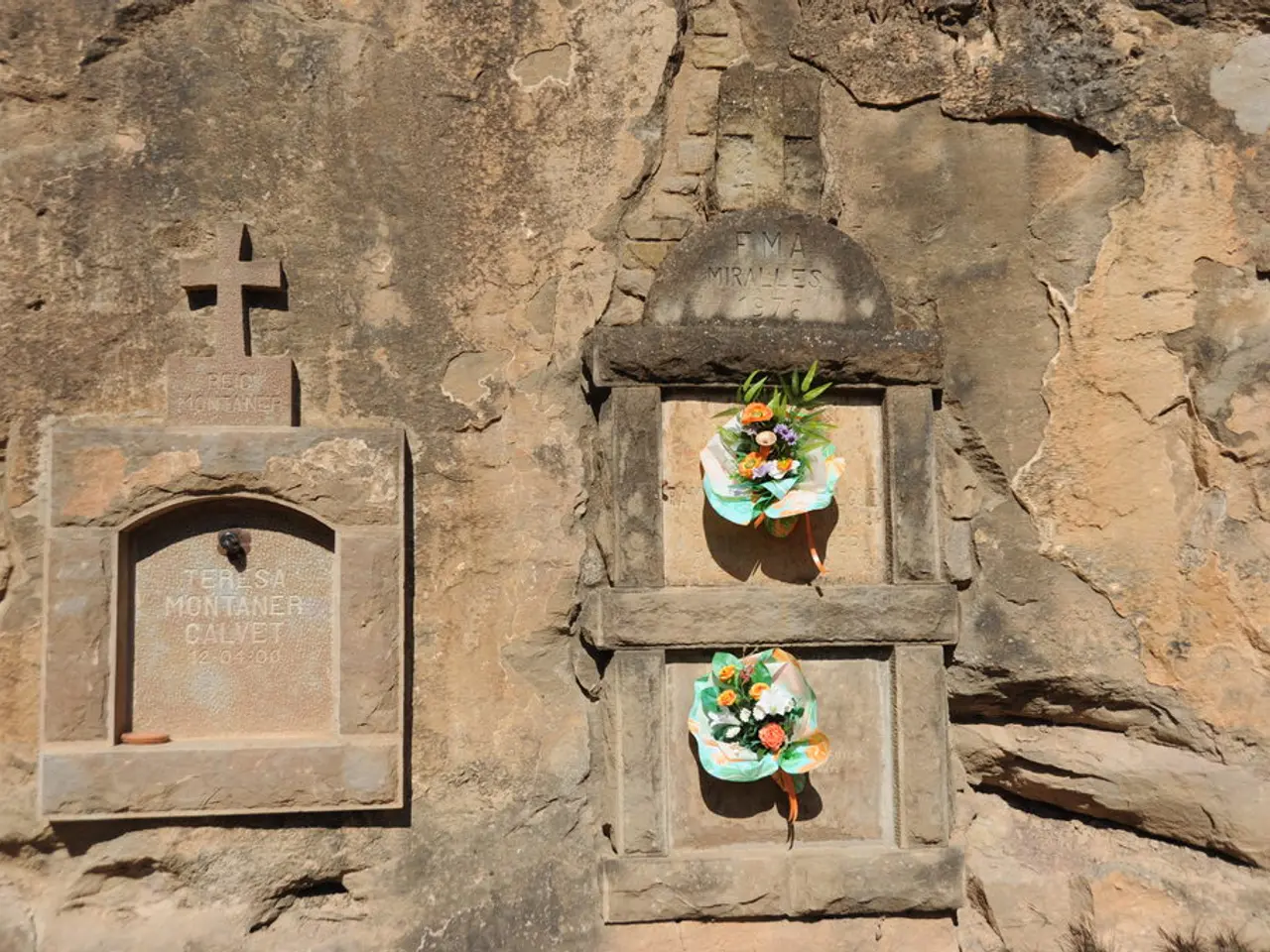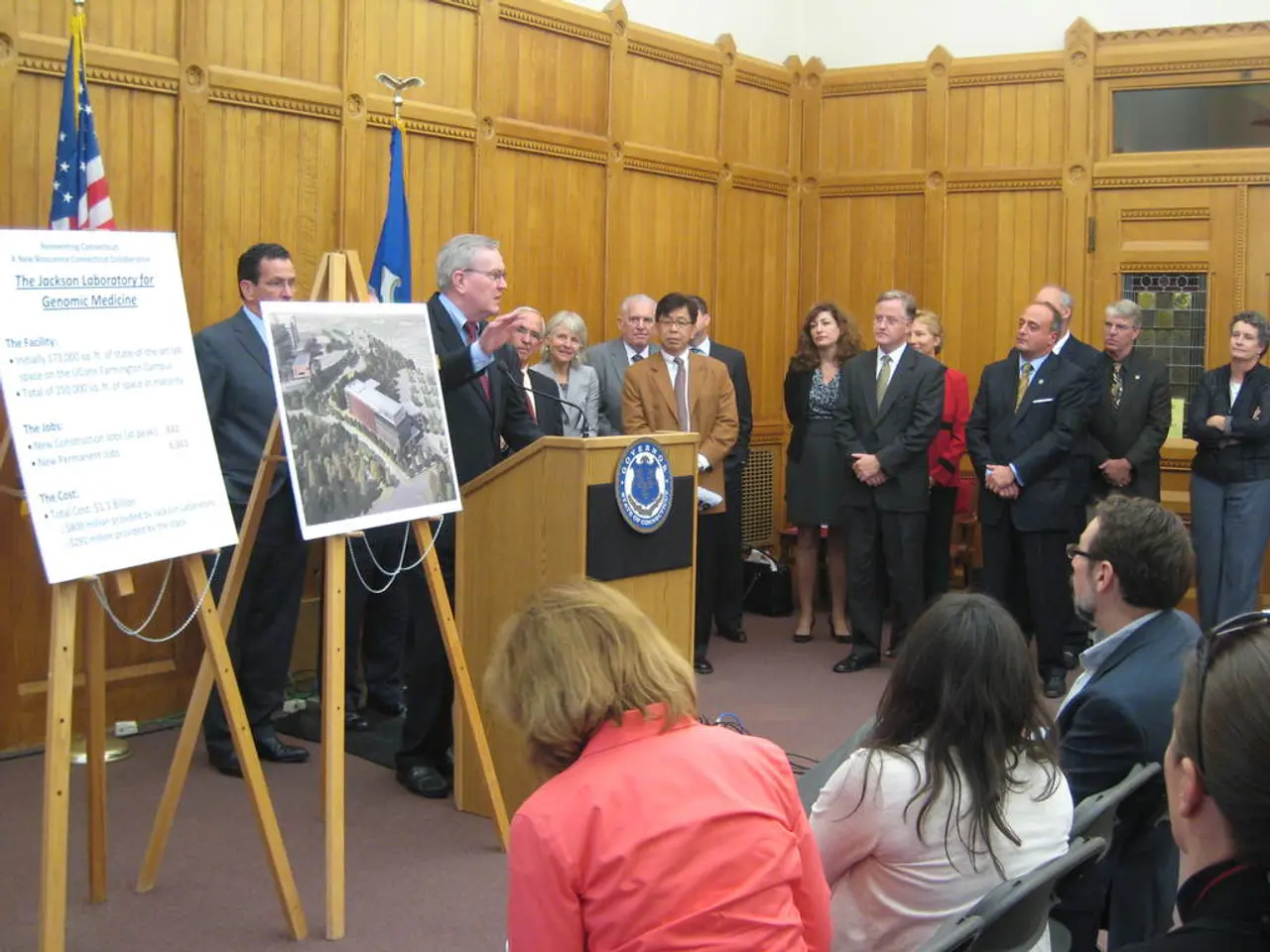Allocating Forty Million Dollars in President Trump's Budget Proposal for Statues in the New National Garden of Heroes
The United States Congress has approved a $40 million allocation for the procurement of statues for the National Garden of American Heroes, as outlined in the House-passed "One Big Beautiful Bill Act." This funding, directed by Section 80305 of the bill, will be used to create life-size statues of individuals who have significantly contributed to America's cultural, scientific, economic, and political heritage.
The U.S. Department of the Interior has been tasked with carrying out the provisions of Executive Order 13934, which established the concept and initial list of honorees for the statue garden. The department will oversee the creation and installation of the statues, which will be made of marble, granite, bronze, copper, or brass and will be depicted in a realistic manner, with no modernist or abstract designs allowed.
The proposed sculpture garden is intended to serve as a public space where Americans can gather to learn about and honour American heroes. The garden's location and landscape architects have not yet been confirmed, although South Dakota’s Black Hills region near Mount Rushmore has been suggested.
The legislation provides the $40 million as an appropriation for the stated purpose, with funds typically available for obligation and expenditure until the end of the fiscal year for which they are appropriated, unless otherwise stated. However, the exact duration or fiscal year availability is not specified in the available summaries of the bill’s text.
The National Endowment for the Humanities (NEH) announced the plan for the National Garden of Heroes in an April news release. Selected artists will receive awards of up to $200,000 per statue.
The National Garden of Heroes was first announced in an executive order during Trump's first term in 2020. The garden is a priority for the 250th anniversary of the Declaration of Independence next year.
The "One Big Beautiful Bill Act" also includes provisions for the NEH Fellowships and Awards for Faculty, worth $60,000, which were initially cancelled by the Trump administration. The legislation has been criticized for its impact on the deficit, with the Congressional Budget Office estimating it would add $3.3 trillion to the deficit over a decade.
The statues will feature 250 life-size statues of individuals, including George Washington, Abraham Lincoln, Alexander Graham Bell, the Rev. Dr. Martin Luther King Jr., Sacagawea, and the Wright Brothers, alongside figures such as Kobe Bryant, Julia Child, Alex Trebek, and Hannah Arendt. Other individuals on the list include photographer Ansel Adams, painter John Singer Sargent, architect Frank Lloyd Wright, painter and illustrator Norman Rockwell, early American portraitist Charles Wilson Peale, and Carnegie Museum of Art founder Andrew Carnegie.
The planned sculpture garden is a significant project that aims to honour and celebrate the diverse group of historical, cultural, and modern American figures who have made significant contributions to American society. The garden will be a testament to the rich history and heritage of the United States, providing a space for Americans to gather and learn about the heroes who have shaped the nation.
The U.S. Department of the Interior is responsible for overseeing the creation of the modern art sculptures for the National Garden of American Heroes, with each statue to be created by an artist and depicted realistically, without any modernist or abstract designs. The statues, made of marble, granite, bronze, copper, or brass, will honor figures like George Washington, Abraham Lincoln, and Alex Trebek, as well as disruptors like Kobe Bryant, Julia Child, and Hannah Arendt. The legislation has allocated $40 million for this project. Despite criticism over its impact on the deficit, the sculpture garden is a priority, especially for the 250th anniversary of the Declaration of Independence next year, and will be a permanent showcase of America's cultural, scientific, economic, and political history.








